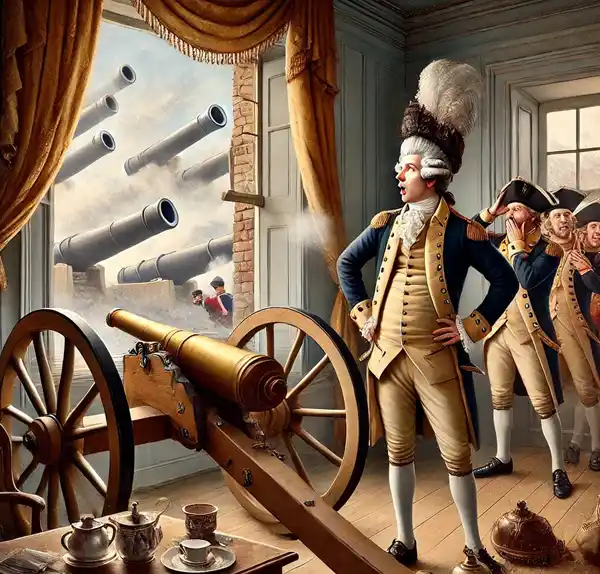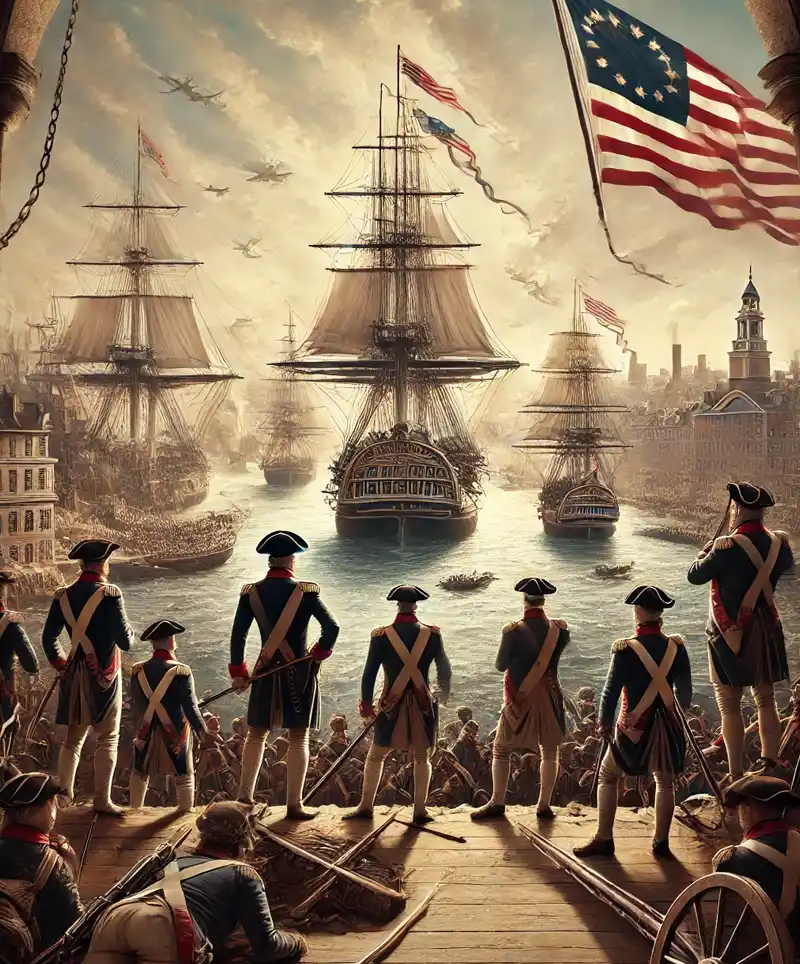Every March 17th, while most people are donning green and toasting to St. Patrick’s Day, Bostonians have an extra reason to celebrate—and no, it’s not just another excuse to skip work. Evacuation Day, a holiday as dramatic as it sounds, commemorates the day in 1776 when British troops high-tailed it out of Boston, officially ending an 11-month standoff with George Washington and his ragtag army.
Think of it as Boston’s own Independence Day, but with more cannonballs and slightly fewer fireworks. If you love history, patriotism, and a good underdog story, buckle up—this one’s for you.
 The British Are… Leaving?
The British Are… Leaving?
The story of Evacuation Day starts with the Siege of Boston, a long and deeply awkward military standoff that lasted from April 1775 to March 1776. After the battles of Lexington and Concord lit the fuse of the American Revolution, colonial forces (led by none other than George Washington) surrounded Boston, effectively putting the British troops under lockdown before lockdowns were a thing.
Now, here’s where things get really good. Enter Henry Knox, a man with a plan—and an absurdly dangerous one at that.
Knox, a former bookseller turned artillery expert (because career changes were wild back then), had a brilliant idea: haul dozens of massive cannons from Fort Ticonderoga in New York—over 300 miles of snow-covered terrain—all the way to Boston.
This insane mission, known as the Knox Expedition, involved dragging 60 tons of artillery over frozen rivers, mountains, and miles of unforgiving wilderness using oxen, sleds, and sheer revolutionary grit. It was basically the 18th-century equivalent of moving an entire apartment’s worth of furniture by hand, in the middle of a blizzard, without a moving truck.
And against all odds? It worked.
By March 1776, Washington’s forces had strategically positioned these newly acquired cannons on Dorchester Heights, giving them a commanding view of the city and the British fleet. When British General William Howe woke up on March 5th and saw Washington’s cannons aimed straight at him, he did what any reasonable person would do—he panicked.
Within days, Howe realized that staying in Boston was no longer an option unless he wanted to get a cannonball through the front door. On March 17th, 11,000 British troops and over 1,000 Loyalists packed up, sailed out of Boston Harbor and left America for good.
The best part? Not a single shot was fired during the evacuation.
Washington had won a bloodless victory, securing Boston as the first major American city freed from British control.
Why Bostonians Celebrate Evacuation Day
 You’d think that a day marking the first major victory of the Revolutionary War would be nationally recognized, right? Wrong.
You’d think that a day marking the first major victory of the Revolutionary War would be nationally recognized, right? Wrong.
Outside of Boston, Evacuation Day doesn’t get much love, but for locals, it’s a source of civic pride—and, let’s be honest, an extremely convenient excuse for a holiday. Since it coincides perfectly with St. Patrick’s Day, many Bostonians take full advantage of this two-for-one celebration.
Historically, Evacuation Day was declared an official public holiday in 1901, mainly as a way for Boston’s large Irish-American population to stick it to the British (while also getting a sanctioned day off to celebrate St. Patrick’s Day—brilliant move, Boston).
So, every March 17th, the city commemorates this historic event with:
- Ceremonies on Dorchester Heights (the site of Washington’s sneaky cannon placement).
- Historical reenactments (because dressing up like 18th-century soldiers is always a good time).
- A giant St. Patrick’s Day parade, which—let’s be real—most people assume is just about leprechauns and Guinness, but in Boston, it doubles as an Evacuation Day celebration.
History and beer? A winning combination.
Fun Facts About Evacuation Day
History isn’t just about dusty textbooks—it’s full of strange twists, wild coincidences, and clever loopholes. Here are some of the most fascinating facts about Evacuation Day that might just surprise you.
- Boston loves a holiday loophole. When Massachusetts officially ended paid state holidays for government workers in 2010, Suffolk County (home to Boston) kept Evacuation Day alive—meaning city workers still get the day off.
- British troops fled to Nova Scotia. After leaving Boston, the British army retreated to Halifax, Canada—probably grumbling about those pesky rebels the whole way.
- The "Grand Union Flag" flew over Boston for the first time. Before the Stars and Stripes, Washington’s army raised the Grand Union Flag (a mix of the British Union Jack and colonial stripes) over the city, marking one of America’s first public displays of independence.
- Henry Knox’s 300-mile cannon trek is one of the most underrated military feats in U.S. history. The fact that he pulled it off without losing a single cannon is nothing short of miraculous.
- Boston’s St. Patrick’s Day Parade is the largest in New England. And thanks to Evacuation Day, it has extra revolutionary flair.
How to Celebrate Evacuation Day
Not sure how to mark the occasion? Whether you’re a history buff or just in it for the fun, there are plenty of ways to honor Evacuation Day.
Visit Historic Sites
If you’re in Boston, head to Dorchester Heights, where Washington’s cannons forced the British to skedaddle. You can also check out the Boston Tea Party Ships & Museum or walk the Freedom Trail for a dose of Revolutionary history.
Give a Toast to Henry Knox
The man deserves some recognition. Raise a glass (perhaps of Sam Adams—a fitting choice) in honor of the bookish artillery genius who dragged cannons through the snow for freedom.
Mix Your Holidays
It’s no accident that Evacuation Day and St. Patrick’s Day share a date. Feel free to celebrate like a true Bostonian—with a pint of Guinness, a plate of corned beef and cabbage, and a side of Revolutionary War trivia to impress your friends.
Reenact Your Own Evacuation
Grab a group of friends and dramatically "evacuate" a bar at closing time. Bonus points if you shout, "Retreat! Retreat!" while doing so.
Please Share our Content






 The British Are… Leaving?
The British Are… Leaving? You’d think that a day marking the first major victory of the Revolutionary War would be nationally recognized, right? Wrong.
You’d think that a day marking the first major victory of the Revolutionary War would be nationally recognized, right? Wrong.








 "Sláinte!" is a traditional Irish expression used as a toast, equivalent to "Cheers!" in English.
"Sláinte!" is a traditional Irish expression used as a toast, equivalent to "Cheers!" in English.